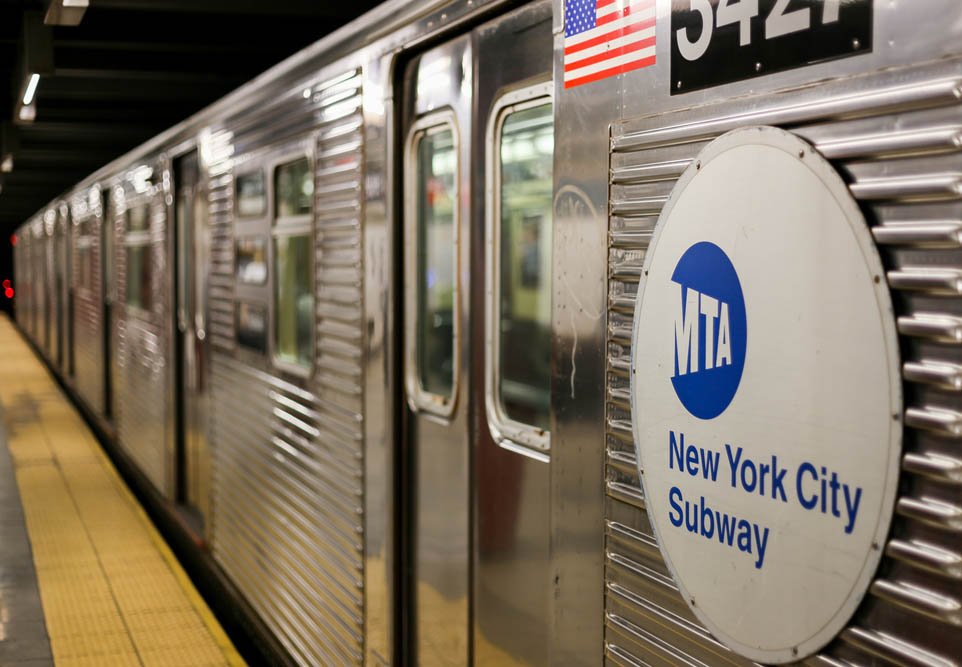Mayor Bill de Blasio finally met with subways chief Andy Byford on Tuesday after Byford had spent half a year on the job. It’s true the mayor doesn’t run the subways — but his constituents’ jobs depend on them, and he should have welcomed Byford to Gotham months ago.
Without efficient mass transit, New York couldn’t have increased its number of jobs by nearly 40 percent in four decades — and helped tens of thousands of people in once-struggling neighborhoods get to those jobs.
In 1977, “only” 917.2 million people took the subways, which were in horrific shape. Back then, New York also had a record-low modern population, as people fled crime as well as bad infrastructure.
In the ’80s, the state and city started investing in the future — and the smartest investment was putting billions into the subways. That paid off; ridership has nearly doubled, to a modern peak of nearly 1.8 billion in 2015.
“Neighborhood by neighborhood, areas where people were once estranged from the workforce for years, even a lifetime, are now home to tens of thousands of new workers.”
But why are people taking the subway? It’s not just population growth. The city’s population since 1990 has grown 15 percent (excluding Staten Island, which has no subways); ridership is up 82 percent.
The biggest factor is the city’s workforce. Neighborhood by neighborhood, areas where people were once estranged from the workforce for years, even a lifetime, are now home to tens of thousands of new workers.
Consider the South Bronx. Melrose, Mott Haven, Hunts Point and Longwood are New York’s poorest neighborhoods. But their population has grown by 38 percent since 1990. And people are more likely to work. In 1990, fewer than half the adults in the area worked, with a labor-participation rate of 44 percent. Today, the labor-force share is 50 percent — still the city’s lowest, but a tremendous improvement.
These workers rely on subways. In 1990, 65 percent of the area workforce commuted via public transit; by 2016, the figure was nearly 70 percent. The number of people commuting on public transit to work from these South Bronx neighborhoods has more than doubled since 1990, from 17,500 to 35,600.
This may seem obvious: Don’t all New Yorkers take the subway to work? Nope. Wealthy Lower Manhattan is similar in size and population growth to the South Bronx. It grew by 30 percent since 1990.
In 1990, 50 percent of its commuters took public transportation; by 2016, 53 percent did. Yet that hasn’t translated into soaring subway-ridership numbers. The number of people taking transit to work has increased 30 percent, compared with the South Bronx’s more than 100 percent growth.
Behind the difference is residents’ participation in the workforce, which has not grown in lower Manhattan as it has in the South Bronx. Back then as now, 75 percent of adults worked.
Because the percentage of people working has not grown and because such a high percentage of residents walk to work — 27 percent, versus 10 percent in the South Bronx — the number of people taking public transportation hasn’t grown as much.
The difference is reflected in ridership at stations in each area. In the South Bronx, between 1998 (the first year for which the MTA made station-level data available) and 2016, ridership grew by 71 percent, far faster than the city as a whole during that period. In lower Manhattan, ridership grew at 40 percent, slightly below the city’s overall rate.
It’s not tourists who are crowding our subways; it’s poorer and middle-class New Yorkers who work.
The same is true in Central Harlem, where only 50 percent of adult residents worked in 1990. Today, 64 percent work. In 1990, 22,100 workers commuted on public transit from the area; today, it’s 44,900.
“It’s not tourists who are crowding our subways; it’s poorer and middle-class New Yorkers who work.”
These differences hold across the city. If you live in Midtown, you don’t need a subway to get to a decent-paying job; in Bushwick, you do.
New York can’t continue this workforce miracle if subways keep falling apart. Even as late as 1998, the subways had space to absorb New York’s new workers.
Now, they’re full, and most residents of the South Bronx don’t have other options. Without the ability to afford a car, or to walk to a good job, it’s take the subway — or don’t work at all.
This piece originally appeared in the New York Post (Adapted from a recent report)
______________________
Nicole Gelinas is a senior fellow at the Manhattan Institute and contributing editor at City Journal. Follow her on Twitter here.
This piece originally appeared in New York Post
